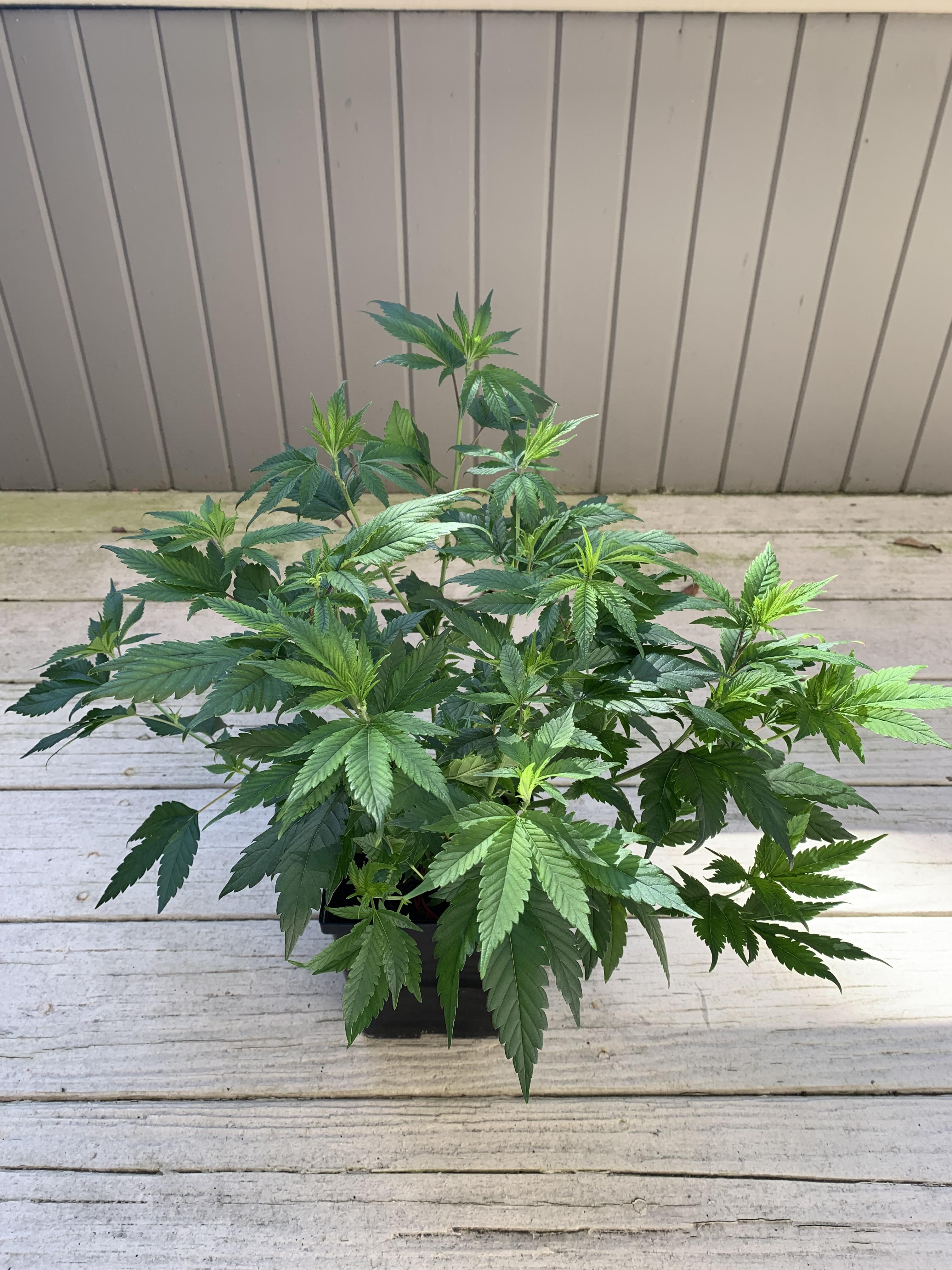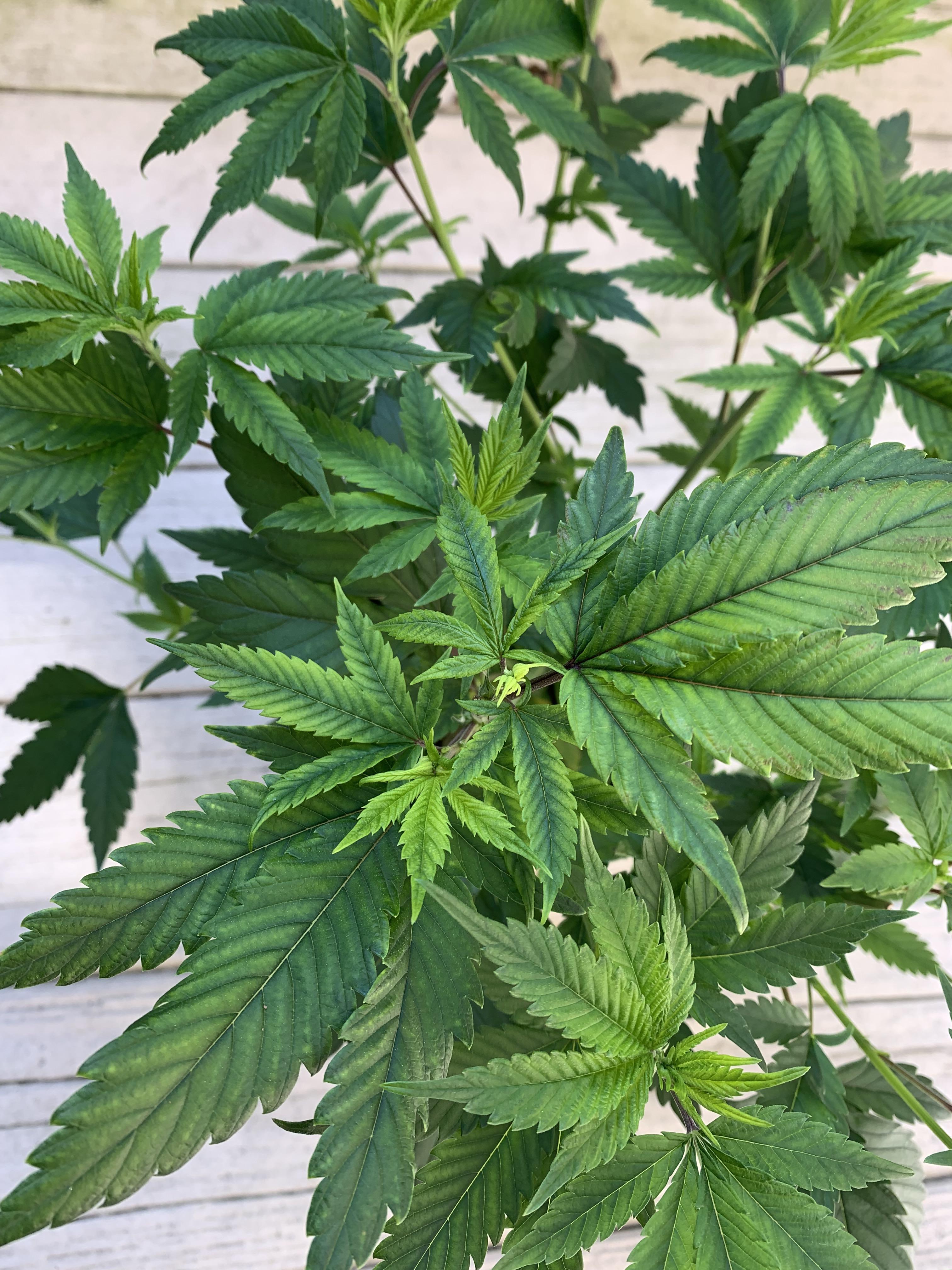Copy and paste from dark heart, I thought this would be a good intro..
Hop latent viroid (HpLVd), the causal agent of dudding, is a current and important topic in the cannabis industry. Given the negative impacts to quality and yield, the ease of transmission, and the difficulty in identifying early infections, the disease will likely be an industry-wide problem for years to come. From a scientific perspective it is a very interesting pathogen, with characteristics that make it very well suited to take advantage of the standard practices in this industry.
.
Part I: the Pathogen
Your plants are under vegetative lights and look good. Mostly. Well, maybe some have a less dense canopy, leaflets are overlapping, internodes are short, and branching angles are a bit off. It’s really subtle, though, so maybe you are imagining it. The schedule is to flip to flowering lights next week, so you don’t think much of it. A few weeks into flower you notice that a significant number of your plants have small, loose buds developing, or no flowers at all. You look at nutrient levels, light levels, and dial in as many parameters as possible. The worst-off plants have almost no flowers, and the small buds also have fewer trichomes. When harvest occurs the overall yield is way down, and the quality is lacking. This is a common scenario with hop latent viroid (HpLVd) infection, a very small pathogen causing big issues in cultivation.
First, a little introduction to the pathogen. HpLVd is one of a group of pathogens collectively known as viroids, of which there are 27 known species.[1] They infect higher order plants, with 25 that infect dicots and two that infect monocots.[2] They are all circular single-stranded RNA molecules that range in size from about 245 to 465 nucleotides in length.[1] HpLVd is on the smaller side at 256 nucleotides; the full sequence is at the end of this post.[3] To put that in perspective, the genome of SARS-CoV-2 is 29,903 nucleotides and the genome of cannabis is about 818 Megabase pairs.[4,5] Viroids differ from viruses in that they do not code for proteins and do not have a capsid structure. Even the simplest viruses have coding sequences to make proteins of their own for basic functions. They also have coat proteins forming a shell around their genomes to protect their genetic material against degradation when moving between hosts. Viroids rely entirely on the cells they take over for necessary processes: replication and movement. Their RNA genome has a lot of secondary structure, which allows for shapes that interact with the cellular proteins and enzymes. Viroids are also known to cause small RNA production within host cells, further disrupting normal processes.[1,6] By highjacking and disrupting cellular functions, they cause the symptoms we do not want.
If they have no proteins, no capsid structure, and rely on their host to do everything, how do viroids infect new plants? Through us, of course. Okay, we have not been around for the entire history of viroids, but once humans arrived on the scene and started developing agriculture life became easier for them. Viroids spread through seeds, clonal propagation, and sap transmission.[1,7,8] They are generally not transmitted by insects, though one has been shown to be effectively transmitted by aphids. Collectively, this means our actions and sanitation practices in the greenhouse directly impact the spread of HpLVd.
So why do we call it hop latent viroid? In virology, the first researcher who describes the disease and proves the causal organism gets naming rights. Plant virology naming conventions include the plant host it is first described in and symptoms associated with the disease it causes. HpLVd was originally described from symptomatic hop fields in 1988, Germany.[3] In hops, very few cultivars are symptomatic when infected with HpLVd and only show symptoms under certain environmental conditions.[9] This is pathogen latency, so the pathogen description, a viroid that is latent in hops, is shortened to hop latent viroid.


